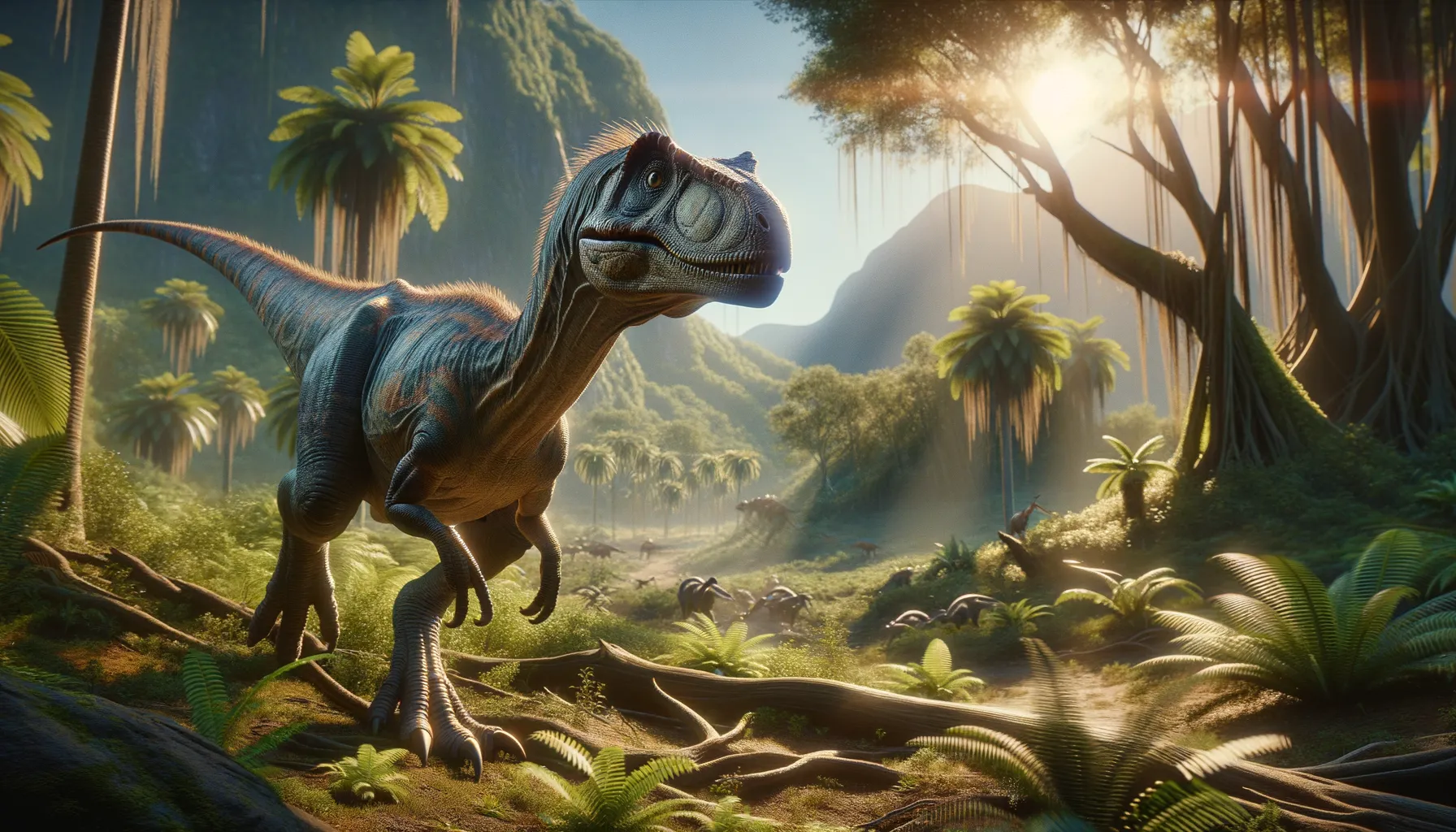
Ischisaurus
A swift predator from the Triassic age.
Period
Triassic
Length
Ranged between 6 to 7 feet in length.
Height
About 3 feet tall at the hip.
Weight
Estimated to weigh around 70 pounds.
Ischisaurus was a small theropod dinosaur that roamed the landscape of what is now South America during the Triassic period. This predator was agile, with a lightweight build that allowed it to be nimble in its environment. Despite its size, it played an important role in the ecosystem. Its discovery in Argentina opened new pathways for understanding dinosaur evolution in the southern continents.
Diet
Ischisaurus was a carnivore, relying on its sharp teeth and claws to catch small animals. Its diet consisted mainly of smaller reptiles and possibly insects, allowing it to survive in diverse environments.
Hunting
Ischisaurus likely hunted alone, utilizing stealth and speed to approach its prey. Its keen senses would have been crucial in detecting and capturing animals in the dense underbrush.
Environmental challenges
Ischisaurus lived in a time when the world's continents were still largely connected, creating a range of environmental challenges. It had to adapt to different climates and landscapes, from arid regions to lush forests. Competition with other predators would have influenced its hunting strategies and territorial behavior. Natural disasters, like volcanic eruptions, posed additional threats to its habitat and food sources.
Speed
Ischisaurus was moderately fast, likely moving at the speed of a human jogger.
Lifespan
Lived around 10 to 20 years in the wild.
First discovery
Ischisaurus was first discovered in Argentina in the early 20th century.
Fun Facts
- Ischisaurus was a small meat-eating dinosaur that lived around 230 million years ago.
- This dinosaur was discovered in Argentina, which tells us it roamed parts of South America.
- Ischisaurus belonged to a group of early dinosaurs that were on their way to becoming more like the famous theropods such as T. rex.
- Despite its fearsome teeth, Ischisaurus was only about 6 feet long, roughly the size of a modern-day turkey with a long tail.
- Its name means 'Isca lizard,' referencing the place it was found, Ischigualasto, often called the 'Valley of the Moon.'
- The discovery of Ischisaurus helps scientists understand the early stages of dinosaur evolution and how they started to dominate the Earth.
- Ischisaurus lived during the Triassic period, a time when dinosaurs were just beginning to appear.
Growth and Development
Like many theropods, Ischisaurus likely underwent rapid growth during its juvenile stages. This fast development would have helped it avoid predators and become an effective hunter. As it matured, its muscle structure and agility improved, optimizing it for its predatory lifestyle. Its life stages might be marked by changes in diet and social behavior.
Habitat
Ischisaurus lived in varied environments across ancient South America, ranging from forests to open plains. It thrived in areas where it could find plenty of cover to stalk its prey. Its habitat would have also included water sources, crucial for survival in a fluctuating climate. The diverse ecosystem provided both food and challenges, shaping its evolutionary path.
Interaction with other species
Ischisaurus coexisted with a range of other dinosaur species, leading to possible competition for food resources. It may have encountered larger predators and developed stealthy hunting tactics to avoid conflicts. Interactions with herbivores likely played a role in shaping its behavior as both a predator and competitor. The presence of other species also provided opportunities for scavenging when prey was scarce.
Natural lifespan
In the wild, its natural lifespan was likely around 15 years.
Reproduction
Ischisaurus likely laid eggs in clutches, with young ones being precocial, meaning they were relatively mature and mobile from birth. Nesting sites would have been selected for safety and proximity to food sources. Parental care, if any, might have been limited as young Ischisaurus were capable of fending for themselves soon after hatching.
Social behaviour
Ischisaurus may have been somewhat solitary, focusing on hunting and territory patrolling. Interactions with others of its species would be primarily for mating or territorial disputes. Social structures were likely minimal, but juveniles might have sporadically formed small groups for protection.
Fossil locations
Ischisaurus fossils have primarily been found in the Ischigualasto Formation in Argentina. The region is known for its rich collection of Triassic period fossils, providing important insights into early dinosaur life. Ongoing excavations continue to reveal more about its biology and ecology, expanding the understanding of its role in prehistoric ecosystems.
